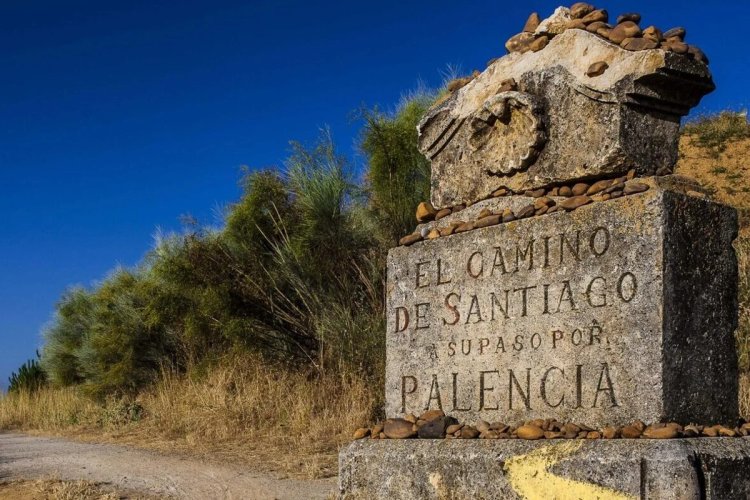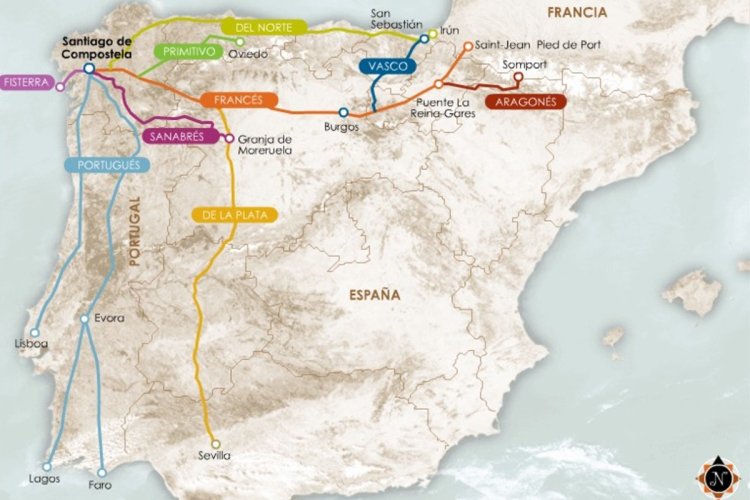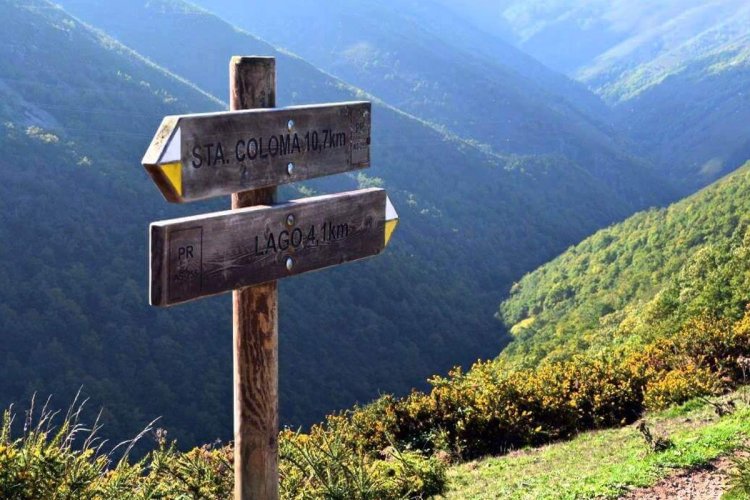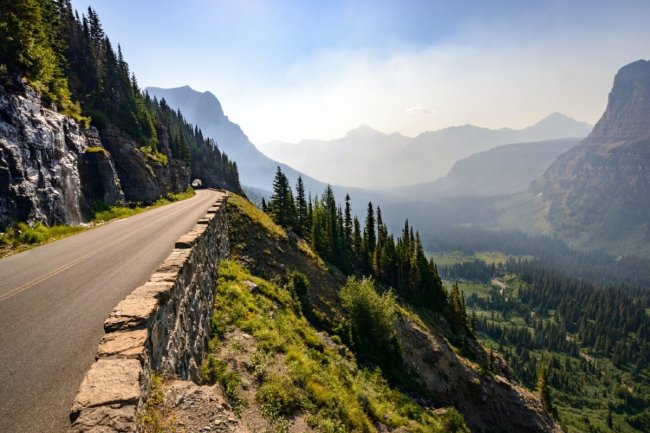The main route of Europe: Camino de Santiago
Let's follow the pilgrims' path

The Camino de Santiago, or El Camino de Santiago, or the Way of Saint James, or simply the Way, is one of the oldest and most famous pilgrimage routes in Europe. According to the legend of believers, after the martyrdom of the Apostle James, his body was placed in a boat and released into the Mediterranean Sea, from where it miraculously sailed back to the mouth of the Sar River, where the saint had preached earlier. The remains of the saint were transferred to the mountain by his former students, and later the Comostella Church was built at the burial site, which gave the name to the now popular route.
In order to ascend this Way, you will need a special passport - a pilgrim’s passport, or credential, but we will talk about this in more detail in the article. The route stretches through Spain, France and Portugal, ending in a single place - the Spanish town in the north of Galicia, Santiago de Compostela. Currently, the route has almost lost its religious significance, although it is the third shrine of the Christian world (after Jerusalem and the Vatican), turning into a popular and picturesque tourist route.
Where to start the route?

There is no starting point for the Way, but there are four main starting points. Consequently, there are four route options: French, Northern, Primitive and Portuguese.
The French Pilgrim's Route is the most popular and busiest route, but also the longest - you have to walk more than 800 km. The route begins in the small town of Saint Jean Pied De Port in western France. Although most travelers choose to start their journey there, you can go from anywhere: some choose as their starting point the cities of Pamplona, Burgos, Leon or even Sarria, which is only 100 km from Santiago de Compostela.
The Northern Route, or Camino del Norte, is very beautiful and picturesque, since its main part runs along the Atlantic coast in northern Spain, and it stretches for 810 km. You can start walking from a place called Irun, gradually passing by San Sebastian, Bilbao, Santander, Oviedo and Guyon, reaching directly to Santiago de Compostello.

The primitive route is considered the most accessible. It starts in the small town of Urquera, but many travelers prefer to start from Oviedo, as it can be reached by plane. In total, the length of the route is 400 km, depending on the starting point.
The Portuguese Pilgrim's Route extends through Portugal and takes about two weeks if you start from Porto (if you plan to go from Lisbon, allow twice as much time). Regardless of the route you choose, you are guaranteed an experience for years to come. You can follow the Way of St. James solely for tourist purposes, but if you are a believer, then at the end of the Way you will be given a composter (or indulgence, remission of all sins).
Where to sleep? Where to eat?

No matter where you start your Santiago Way, you will need to obtain a pilgrim's passport - a small document that confirms your status as a pilgrim. In each city you will be given stamps indicating that you have completed a certain section of the route. This document can be purchased for a few euros at any albergue (hostel) where you stay overnight. They can also be purchased at information desks, which are only available in large cities. You can get a stamp about the route completed at any bar, church or albergue.
Almost every big city has public albergues where a night costs between 5 and 6 euros. For this price you will get a bed in a common room where up to 15 pilgrims can stay overnight. All albergues have a shared kitchen and showers, some with breakfast and Wi-Fi.
The cost of private albergues ranges from 10 to 15 €, some of them offer private rooms. Municipal hostels are often located next to churches, which implies a strict daily routine: you must vacate your bed before 8:00 in the morning, and if you want to have breakfast, you will have to get up before 6 in order to have a common meal with the monks.
When should you go?

The best time of year to start walking the Camino de Santiago route is late spring or early autumn. During this time, the weather will be pleasant and the albergue's availability is guaranteed. Plus, you won't encounter large crowds of people along the way.
Frankly speaking, although you can walk along the Path at any time of the year, from late autumn to early spring many hotels, shops and cafes may be closed in small towns and villages. If you do decide to travel during one of these months, be prepared to make stops in larger cities. This means that every day you will have to travel much longer distances without going into small towns. Moreover, winter in this area is often accompanied by rain, and it can even snow in the mountains.
What should you bring?

The main assistant on a hike is a backpack. You don't need to take a tent or a warm sleeping bag with you, especially in summer. All the necessary things can fit in a 10-liter backpack, which should be comfortable and suitable in size, because you will not part with it throughout the entire trip. Although there is a service for delivering things from one point to another for a small fee.
In addition to the right backpack, you need to purchase high-quality trekking boots that securely fix your feet at the ankles. On average, you will have to walk 25-30 km a day, which will inevitably lead to the appearance of calluses. Therefore, it is important to have light, replaceable shoes for evening relaxation. Be sure to bring Vaseline or other foot softeners before heading out, as well as quality gel pads in case of blisters.
If you plan to prepare your own food during the trek, make sure you have the necessary utensils, as most albergues provide a kitchen but do not provide cooking utensils. The same applies to those who decide to walk the entire route with a tent.

For hikes in the warmer months, you must have SPF cream and a hat with you to avoid sunburn and sunstroke. It's also a good idea to carry paper maps with you or download them onto your phone in advance for added peace of mind.
It is important to think about mobile connection along the route in advance. And although there may be problems with the signal in hard-to-reach places, 5G from leading European operators works perfectly on the main part of the Route. For routes in Spain, you can purchase eSIM for Spain from fedafone, but for all other routes it is better to take a regional tariff for Europe. This way you will be in touch anywhere along the Camino de Santiago and will be able to quickly share your journey with all your family and friends. Good luck on the route!







